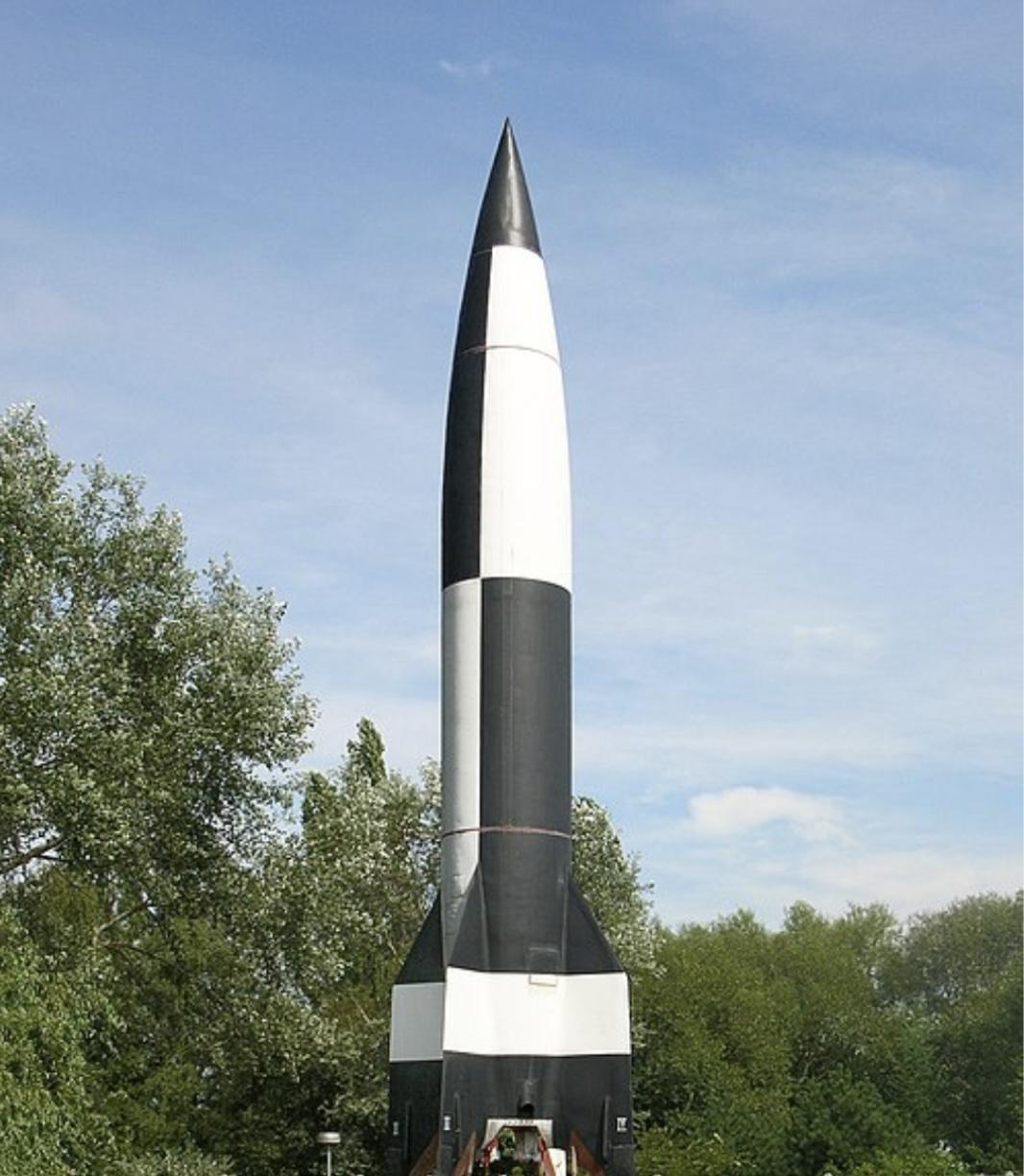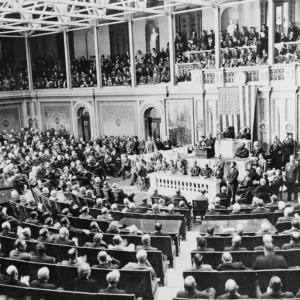
V-2 Rocket
The V-2 rocket (German: Vergeltungswaffe 2, or "Retribution Weapon 2") was the world’s first long-range guided ballistic missile. Developed by Nazi Germany during World War II, it marked a revolutionary leap in military and rocket technology. The principal designer behind the V-2 was Wernher von Braun, a gifted German engineer and physicist who later became instrumental in the American space program.
Von Braun led the development team at the Peenemünde Army Research Center, located on the Baltic Sea. Beginning in the 1930s, his team worked on creating a rocket that could deliver a large explosive payload over long distances at supersonic speeds. By 1944, the V-2 was operational and ready for deployment.
Technologically, the V-2 was an extraordinary achievement. It used a liquid-propellant engine fueled by a mixture of ethanol and liquid oxygen. The rocket was 13.5 meters long, weighed 12.5 metric tons at launch, and carried a one-ton warhead. It utilized gyroscopic guidance and rudimentary onboard computers to control its trajectory—pioneering features at the time.
Production was centered at the Mittelwerk underground factory in central Germany. The facility relied heavily on forced labor from the nearby Dora-Mittelbau concentration camp. Conditions were horrific, with more than 20,000 laborers dying due to starvation, exhaustion, and abuse—more than the number of people killed by the rocket itself.
The V-2 had a range of approximately 320 kilometers and could travel at speeds up to 5,760 km/h. It reached altitudes close to 90 kilometers, entering the edge of space before descending onto its target. Launches were executed from mobile platforms, making them harder to detect or eliminate. Initial tests and launches were conducted at Peenemünde, but later deployments were based in the Netherlands, Belgium, and western Germany as Allied forces advanced.
Between September 1944 and March 1945, more than 3,000 V-2 rockets were launched, targeting cities like London, Antwerp, and Paris. These attacks resulted in an estimated 9,000 deaths. However, the rocket's poor accuracy and high production cost limited its strategic effectiveness during the war.
While the V-2 did not alter the outcome of World War II, it had an enduring impact on global science and military development. After the war, the United States and the Soviet Union competed to acquire German rocket technology and recruit its scientists. Under Operation Paperclip, the U.S. brought Wernher von Braun and over 1,600 other German specialists to America. Von Braun would later lead the design of the Saturn V rocket, which powered the Apollo missions to the Moon.
The Soviet Union also obtained V-2 parts, documentation, and personnel, which helped them establish the foundation of their own missile and space programs. Thus, the V-2 rocket played a key role in initiating the Cold War space race.
The V-2’s influence extended into the development of modern ballistic missiles and space launch systems. Its innovations in propulsion, guidance, and aerodynamics formed the basis of future rockets, both military and civilian. It was the first man-made object to reach the edge of space and laid the groundwork for later space exploration.
However, the rocket's legacy is deeply shadowed by the human suffering that accompanied its production. The use of concentration camp labor and the loss of innocent lives during attacks highlight the ethical dilemmas surrounding technological advancement achieved through inhumane means. This dual legacy prompts continued reflection on the responsibilities that come with scientific and military innovation.
In summary, the V-2 rocket was a milestone in both warfare and aerospace history. Designed by Wernher von Braun and his team, built with brutalized labor under the Nazi regime, and launched from shifting mobile platforms across Europe, it had a range of 320 kilometers and delivered devastating explosions. Though it failed to shift the course of the war, its greater consequence was the technological and geopolitical transformation it helped ignite—ushering in the age of modern rocketry, ballistic missiles, and the exploration of space.










